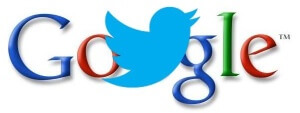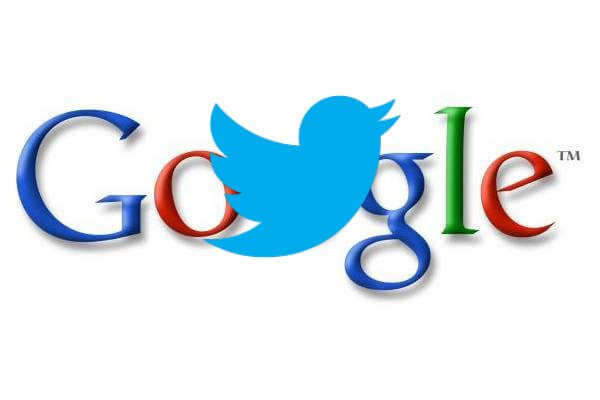Why the new deal works for both of them, and how brands can make it work for them

Image Source: it-scoop.com
In early February, Twitter confirmed rumours that it would once again offer Google access to a live stream of all of its half a billion daily tweets, something that the tech crowd has taken to referring to as the Twitter firehose. The concept itself isn’t new; the companies had a similar agreement from 2009 to 2011, when talks to renew it broke down. At that time, many believed that Twitter didn’t feel the agreement was working for them, as they questioned how much incremental traffic they were getting and worried about competition from Google’s new Google+ social media property. Needless to say, times have changed. The announcement of the new deal comes at a point when benefits abound for the two tech giants to work together once again, not to mention for brands looking to maximize exposure on both properties.
How it helps Twitter
Much of the coverage of this new agreement has legitimately focused on the benefits to Twitter. While Twitter’s earnings nearly doubled and beat expectations for the fourth quarter of 2014, flagging user growth of just 1.4% highlighted the continued plateau of new users discovering the platform. The deal with Google promises a solution to that problem. According to Hitwise, Twitter gets roughly a third of its traffic from Google properties already (including search, Gmail, YouTube and Google+). Feeding a live stream of all tweets for the information-parsers in Mountain View to elegantly deliver to their hordes of information-hungry searchers should certainly introduce even more new people to the magic of Twitter. This extended reach would make Twitter more attractive as a marketing channel, which should generate more revenue. All of that adds up to a major win for Twitter.
How it helps Google
It seems like less attention has been paid to how important this deal is for Google. As information on the Internet becomes more decentralised in its delivery, Google has bent its considerable will on indexing, parsing and delivering content at lightning speeds (most notably with its Caffeine update in 2010). By most accounts, these efforts have been wildly successful feats of modern engineering, but social continues to be a thorn in the search giant’s side. Most of the copious reams of data shared daily on Facebook sit behind a walled garden of privacy settings, and the architecture and intense timeliness of a platform like Twitter has always presented challenges to even the most advanced of web crawlers.
Google has also been searching for years to find ways to weave social signals into its ranking algorithm. After all, its ability to leverage signals from backlinks were what made Google so much better than all of the other search engines in the first place. Links have always been, in effect, a way for users to socialise and call attention to content. As that behaviour has shifted sharply to social channels, Google has been working hard to figure out ways to factor that into its search rankings (many would argue that’s why Google+ exists). Having access to all of these tweets in real time will give Google the opportunity to factor invaluable, timely user behaviour and sentiment into its search rankings. There’s a reason that the money in this partnership will evidently be flowing from Google to Twitter and not the other way around. This is a major win for Google.
How brands can make this work for them
While it may have been built as a way to keep track of what’s going on with your group of friends, Twitter has evolved into a fantastic tool to keep track of what’s going on in the world (or at least those specific corners of it that interest you). A much freer flow of information between Twitter and Google offers brands and marketers some pretty interesting opportunities. While it’s unclear at this point exactly how Google will use and display the information from the Twitter firehose, it’s safe to assume there will be some kind of real-time presentation similar to what existed under the previous agreement. Smart marketers long ago recognised Twitter’s potential as a content publication and distribution platform. Building and maintaining an audience with topical, timely updates and links to meaningful content has become the highest and best use of Twitter for brands. The idea of these tweets showing up in Google’s search results will be an intoxicating proposition for many marketers. Executing a content strategy effectively on Twitter will now have much broader reach and implications beyond social into search. So, how would that work?
Social, meet SEO
When you think of Twitter, you naturally think of the hashtag, but this announcement should put solid keyword research at the top of any brand’s Twitter to do list. Mapping out a content strategy around keyword volume and seasonality for syndication on Twitter makes more sense than ever, as really good content shared there will have a shot at making its way into Google’s results very quickly. Marketers who have been opportunistic with trending topics on Twitter in the past can now take search behaviour into account to really amplify the reach of their content. If you’re a search engine optimisation specialist, Twitter has now become even more important. Achieving visibility on Google for a given keyword can take weeks, months or even years. This new partnership could mean some much quicker wins for SEO.
Broadly speaking, major Internet properties working together to make information more accessible is a move in the right direction, regardless of the underlying motives. This is especially true for a platform like Twitter, whose content is quite explicitly part of the online public discourse. Leveraging Google’s information discovery capabilities to dip into the mind-boggling information stream that is Twitter should be a very good thing for both properties and users, and it will open up incremental touch points for brands who want to connect consumers with their content. In other words, it’s a good thing for just about everybody. This time around, I fully expect the firehose to keep flowing for a lot longer than two years.
Contact DAC today to find out more!




